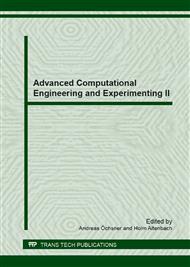p.1
p.7
p.13
p.23
p.29
p.35
p.41
p.47
Inclusion of Tapered Tubes in Enhancing the Crash Performance of Automotive Frontal Structures
Abstract:
This paper treats the design and analysis of an energy absorbing system. Experimental tests were conducted on a prototype, and these tests were used to validate a finite element model of the system. The model was then used to analyze the response of the system under dynamic impact loading. The response was compared with that of a similar system consisting of straight circular tubes, empty and foam-filled conical tubes. Three types of such supplementary devices were included in the energy absorbing system to examine the crush behavior and energy absorption capacity when subjected to axial and oblique impact loadings. The findings were used to develop design guidelines and recommendations for the implementation of tapered tubes in energy absorbing systems. To this end, the system was conceptual in form such that it could be adopted for a variety of applications. Nevertheless, for convenience, the approach in this study is to treat the system as a demonstrator car bumper system used to absorb impact energy during minor frontal collisions.
Info:
Periodical:
Pages:
1-6
Citation:
Online since:
June 2013
Authors:
Keywords:
Price:
Сopyright:
© 2013 Trans Tech Publications Ltd. All Rights Reserved
Share:
Citation:


